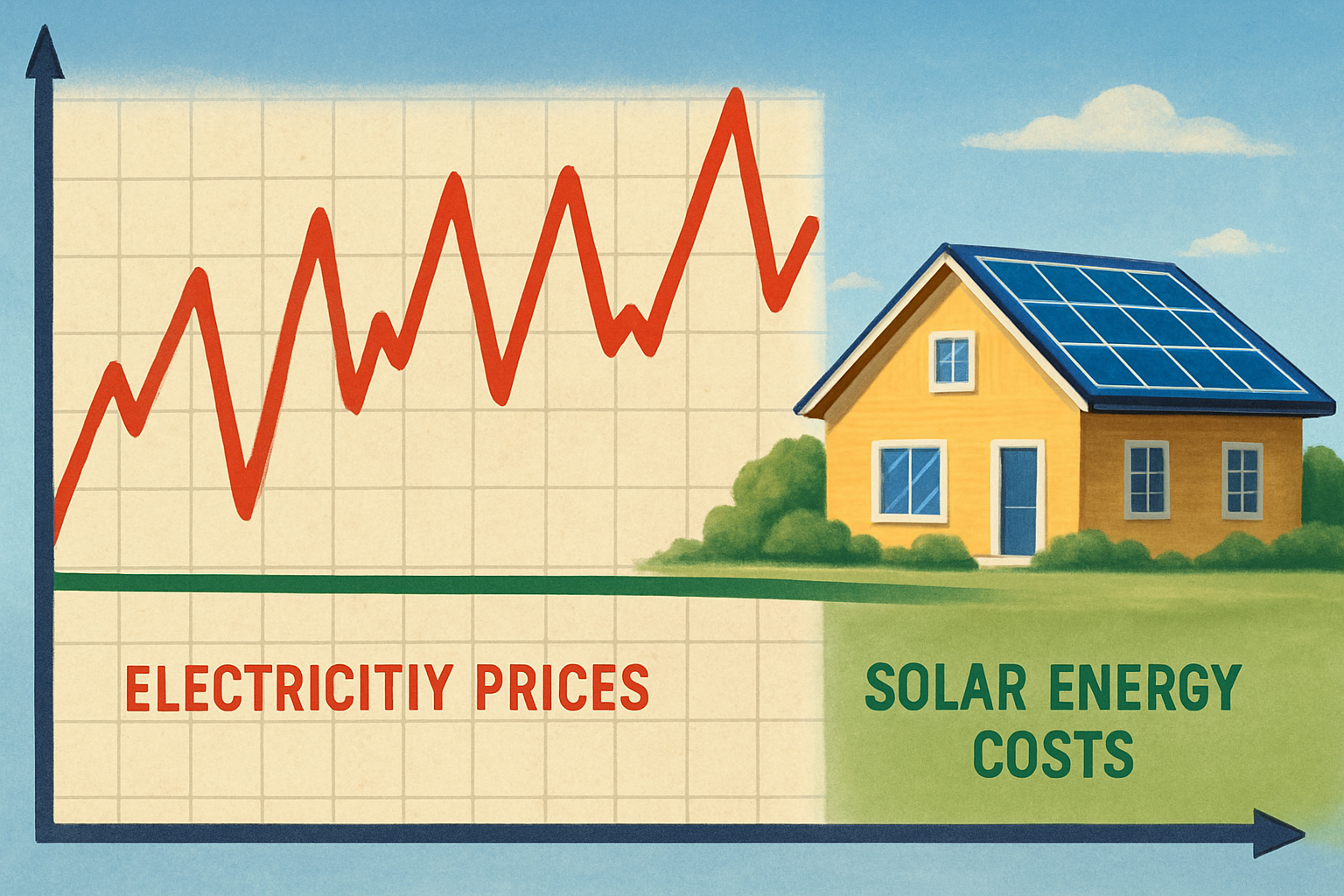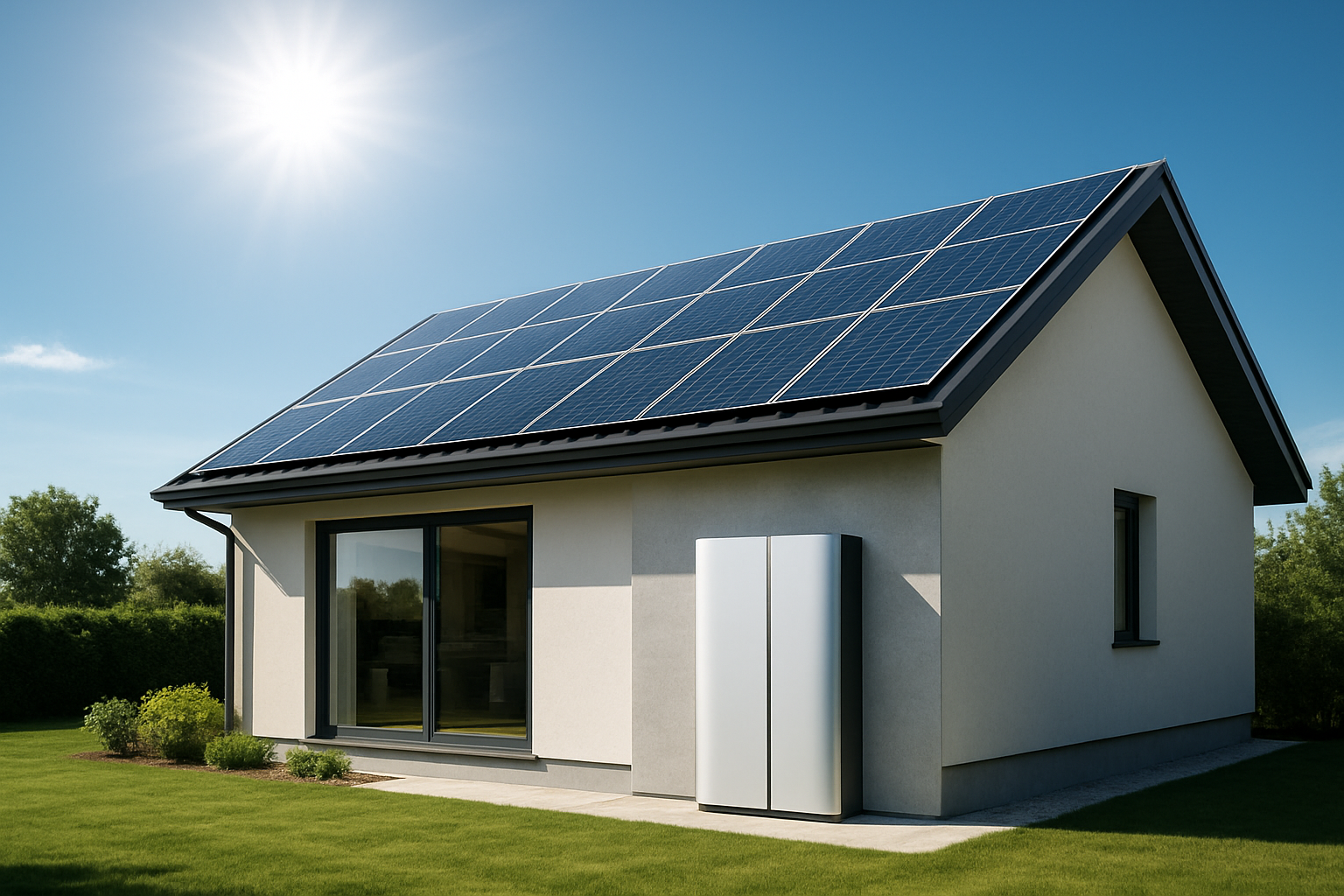Adopting solar energy for your home extends beyond environmental responsibility; it is a strategic financial decision that significantly impacts your long-term electricity expenses. Over decades, solar power offers a robust path to predictable energy costs and substantial savings. This guide explores seven effective ways solar energy can reduce your lifetime home electricity bills, empowering you with greater energy independence.
1. Generate Your Own Power
The most direct way solar panels reduce your electricity bills is by producing your own energy. When sunlight strikes your solar panels, they convert it into direct current (DC) electricity. A solar inverter then transforms this DC electricity into alternating current (AC), which is the usable form of electricity for your home appliances. This self-generated power directly offsets the electricity you would otherwise purchase from your utility company.
Many regions implement billing mechanisms like net metering or feed-in tariffs. Net metering allows you to send any surplus electricity your solar panels generate back to the grid. In return, your utility company provides credits that offset your electricity consumption during times when your panels produce less power, such as at night or on cloudy days. This system ensures continuous power supply while maximizing the use of renewable energy. According to the Solar Energy Industries Association (SEIA), net metering can reduce utility bills by 50% to 90% for residential solar systems.
2. Hedge Against Rising Electricity Rates
Electricity prices have historically shown an upward trend, influenced by factors like fuel costs, infrastructure upgrades, and market volatility. By installing a solar energy system, you effectively lock in a significant portion of your energy costs for the lifespan of your panels, which can extend to 25 years or more. This insulates you from unpredictable future rate hikes.
As you generate your own electricity, your reliance on the grid diminishes, making you less susceptible to market fluctuations. Once your solar system is installed, the cost of the energy it produces remains stable over time, offering a predictable and often lower rate compared to utility-supplied electricity. Even with potential annual increases in grid electricity prices, your solar system provides consistent and affordable energy.
3. Enhance Your Home's Value
Investing in solar panels can significantly increase your home's market value. Studies indicate that homes with solar installations tend to sell for more than comparable properties without them. For instance, a 2025 SolarReviews study found that homes with solar panels sold for approximately 6.9% more on average than those without in the United States. Another research, analyzing California home sales between 2020 and 2023, revealed that homes with owned solar panels sold for 5% to 10% more than similar homes without solar.
The added value stems from the long-term financial benefits of lower utility bills, making solar-equipped homes highly attractive to prospective buyers. The National Renewable Energy Laboratory (NREL) also reported that for every $1 of savings on your electricity bill due to solar, your home's value could increase by roughly $20. Moreover, homes with solar panels may sell faster than those without, with some studies suggesting a 20% quicker sale time.
4. Leverage Financial Incentives
Governments and local authorities often offer various incentives to encourage solar adoption, further reducing your overall investment and increasing long-term savings. One significant incentive is the federal Investment Tax Credit (ITC) in the United States. In 2025, this credit allows homeowners to claim 30% of their solar panel system costs as a direct reduction on their federal taxes.
This credit applies to the costs of photovoltaic solar installations and can also include battery storage technology. There is no cap on the value you can claim, and if your tax liability is not high enough to claim the full credit in one year, you may be able to roll over any unused credits to future tax years. Beyond federal programs, many states and local utilities offer additional rebates, tax exemptions, or performance-based incentives, further enhancing the financial viability of going solar. (Please note: This information is for general guidance only and does not constitute tax or financial advice. Consult a qualified professional for personalized advice.)
5. Integrate Energy Storage for Maximized Savings
While solar panels generate electricity during daylight hours, your energy consumption peaks might occur in the evenings. Integrating a home energy storage system, such as those utilizing high-performance, safe, and reliable Lithium Iron Phosphate (LiFePO4) batteries, allows you to store excess solar energy generated during the day for use when the sun is not shining or during periods of high electricity rates. This is often referred to as 'peak-shaving.'
By optimizing self-consumption, you reduce reliance on grid electricity during expensive peak hours, directly lowering your bills. Battery Energy Storage Systems (BESS) can provide an integrated solution, combining lithium batteries with hybrid inverters and solar panels to manage your home's energy flow efficiently. This not only maximizes your solar savings but also provides a reliable backup power source during grid outages, enhancing your energy resilience.

6. Embrace Off-Grid Solar for Ultimate Independence
For some homeowners, especially those in rural areas or seeking complete energy autonomy, off-grid solar solutions offer the ultimate independence from utility companies. An off-grid solar system is not connected to the main electricity grid; instead, it generates and stores all the energy your home consumes. This means you are entirely exempt from energy price changes and monthly electricity bills.
These comprehensive solutions, often including solar panels, charge controllers, off-grid inverters, and substantial battery banks (like LiFePO4 batteries), ensure a continuous power supply. You avoid unpredictable power outages that affect grid-tied homes, gaining complete budget stability and comfort. While the initial investment for an off-grid system can be higher, the long-term benefits of zero electricity bills and complete self-sufficiency can be compelling.
7. Optimize System Performance for Long-Term Gains
Maximizing the lifetime savings from your solar investment involves ongoing optimization and maintenance. Selecting high-efficiency PV panels from the outset is crucial, as their performance directly impacts overall system output. Proper installation, ensuring optimal panel placement to maximize sunlight exposure and minimize shading, is also vital.
Regular maintenance, such as cleaning your solar panels to remove dirt and debris, helps maintain peak efficiency. Monitoring your system's performance through dedicated apps or smart home technology allows you to track energy production and consumption in real-time. This helps identify any inefficiencies early and enables you to adjust your energy usage habits to maximize self-consumption of your solar power. Proactive management ensures your solar system continues to perform optimally, delivering consistent savings for decades.
Realizing Your Energy Future
Solar energy offers a compelling opportunity to take control of your home's electricity costs and achieve lasting financial benefits. By understanding and leveraging these seven proven strategies—from generating your own power and hedging against rising rates to integrating advanced storage and embracing off-grid solutions—you can significantly reduce your lifetime electricity bills. The blend of technological advancements, financial incentives, and the inherent reliability of solar power makes it a sound investment for a sustainable and independent energy future.
For those seeking reliable and scalable energy solutions, focusing on high-performance lithium batteries, integrated energy storage systems, and comprehensive off-grid solutions provides a foundation for achieving true energy independence.





Leave a comment
All comments are moderated before being published.
This site is protected by hCaptcha and the hCaptcha Privacy Policy and Terms of Service apply.